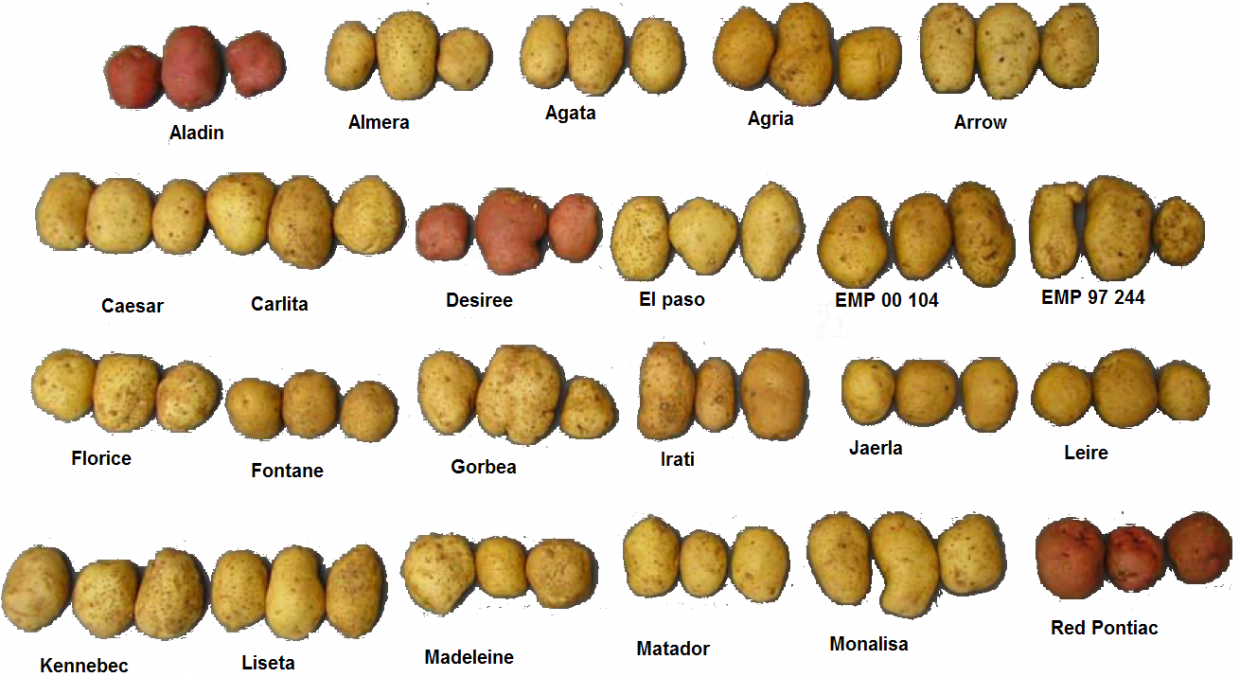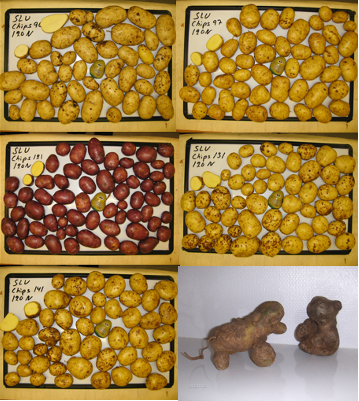Measuring genetic gains in the last 200 years of potato breeding in western Europe
The paper “Genetic gains in potato breeding as measured by field testing of cultivars released during the last 200 years in the Nordic Region of Europe”, published in The Journal of Agricultural Science, has been chosen as the latest Editorial Highlight and is freely available to download for one month.
Breeders estimate genetic gains over time to assess progress made for characteristics being improved through crossing, testing and selection in the target population of environments. Knowing and understanding the genetic gain rates helps on measuring the previous work and to fine-tune the strategy for crop betterment. Crop breeding programs must deliver at least 1% of annual genetic gains, which may be used a key performance indicator. The pursue of genetic gains should guide the breeding process from design through engineering to delivery until farmers grow the released cultivar(s).

Photo Credit: Wikimedia Commons This file is licensed under the Creative Commons Attribution
The authors of this research article used a direct comparison of potato cultivars released and grown across Europe in the last 200 years to understand how breeding contributed to improving productivity, resilience and quality traits in a target population of environments in the Nordic region affected by late blight and long daylengths, thus allowing for the first time in this continent to determine genetic gains in potato breeding. Multisite trials were undertaken in 2020 for evaluating tuber characteristics and host plant resistance to late blight (caused by the oomycete pathogen Phytophthora infestans) of 170 cultivars released for farming throughout western Europe during the last 200 years. Annual rates of genetic gains were estimated by a simple regression considering the year of release as independent variable and the cultivar’s best linear unbiased predictor for each characteristic as dependent variable.The annual genetic gains for tuber yield and flesh’s starch content for potato breeding in Europe were about 0.3% and -0.1%, respectively, thus telling that the realized genetic gains of foreign cultivars for both traits are small or negative, respectively, in the Nordic testing sites. The national annual productivity gains in potato grown in Sweden have been on average 0.7% in the last 60 years while the genetic gains for tuber yield considering only the table cultivars released after the 2nd World War were about 0.36%, thus suggesting that breeding contributed about ½ of it. Furthermore, genetic gains for breeding low reducing sugars in the tuber flesh, and high host plant resistance to late blight were below 0.2% per year.

These results show that genetic gains are relatively small in potato breeding for western Europe, which was not surprising because market quality preferences are known to slow cultivar changes (and the genetic gains therein), which are also influenced by yield potential and market value. For example, low and very low reducing sugars in the tuber flesh are necessary for chips and crisps, respectively. Such markets also ask for potatoes with the right texture for cooking types but differ in tuber shape and size. Long and large potatoes with superficial “eyes” and average dry matter concentration are sought by the chip fast food restaurants, while potato crisps are best from small round potatoes with high dry matter. Similarly, the starch industry seeks large, round potatoes with high dry matter, and the table potato consumers prefer average size tubers with low to average dry matter, superficial “eyes” and smooth skin. Such distinct tuber quality characteristics that meet stringent end-user demands slow the delivery of genetic gains for tuber yield through potato breeding, which also must consider improving host plant resistance to old and emerging pathogens and the target population of environments where the cultivar(s) will be released.
The Journal of Agricultural Science Editorial Highlights are selected by the Editor-in-Chief and are freely available for one month. View the recent selections here.
Photo Credit: (Svensk potatisförädling breeding germplasm) Anders Andersson (Potatisodlarna, Sweden) for crisp breeding clones / Ulrika Carlson-Nilsson (Swedish University of Agricultural Sciences (SLU, Sweden), Sweden)






